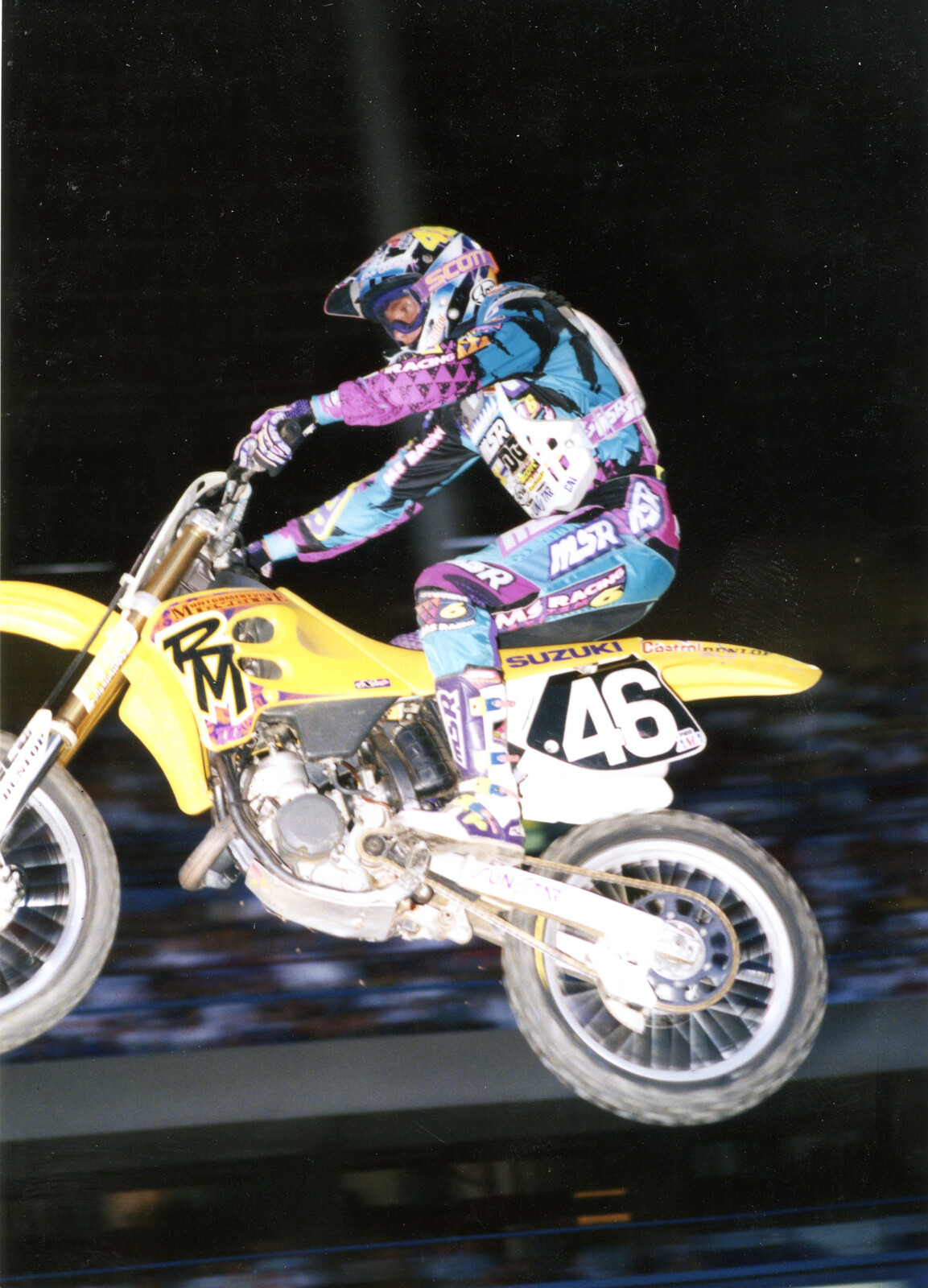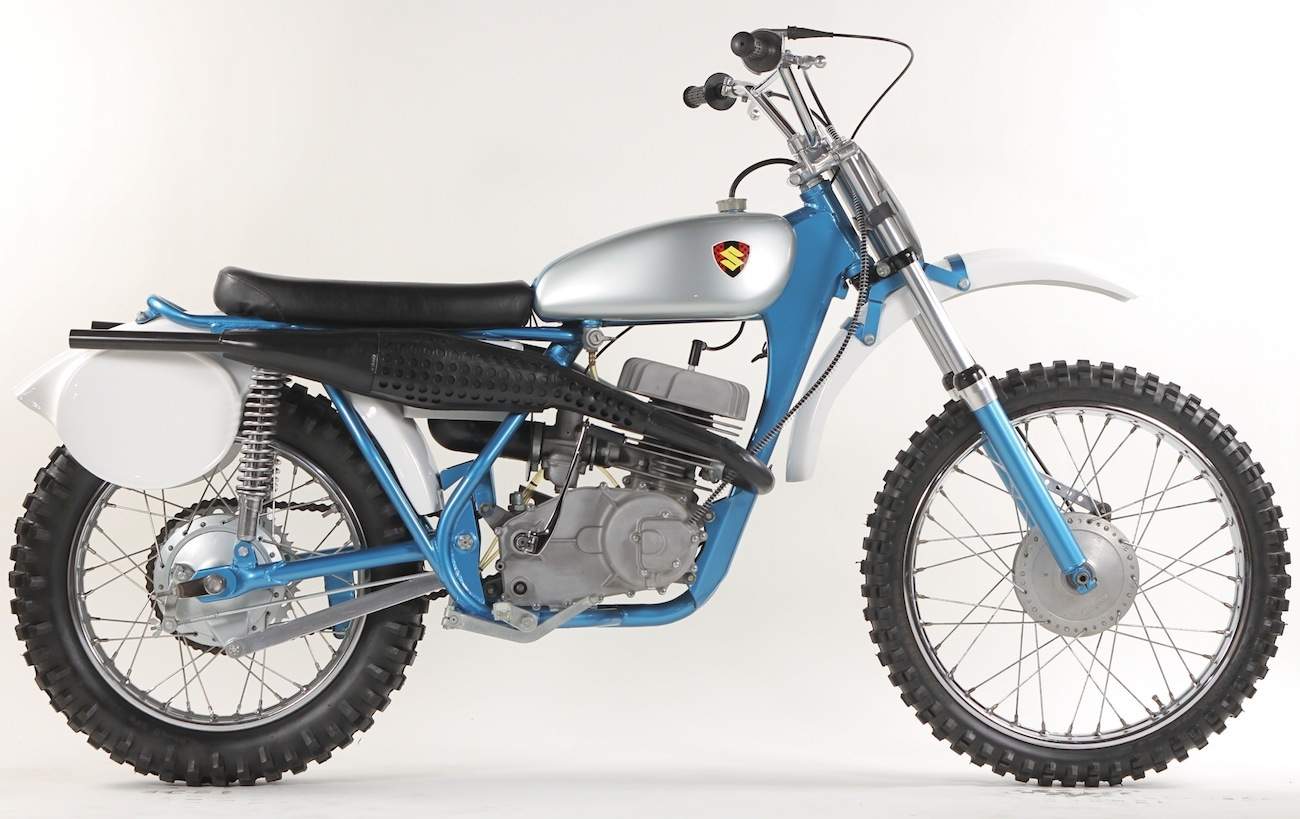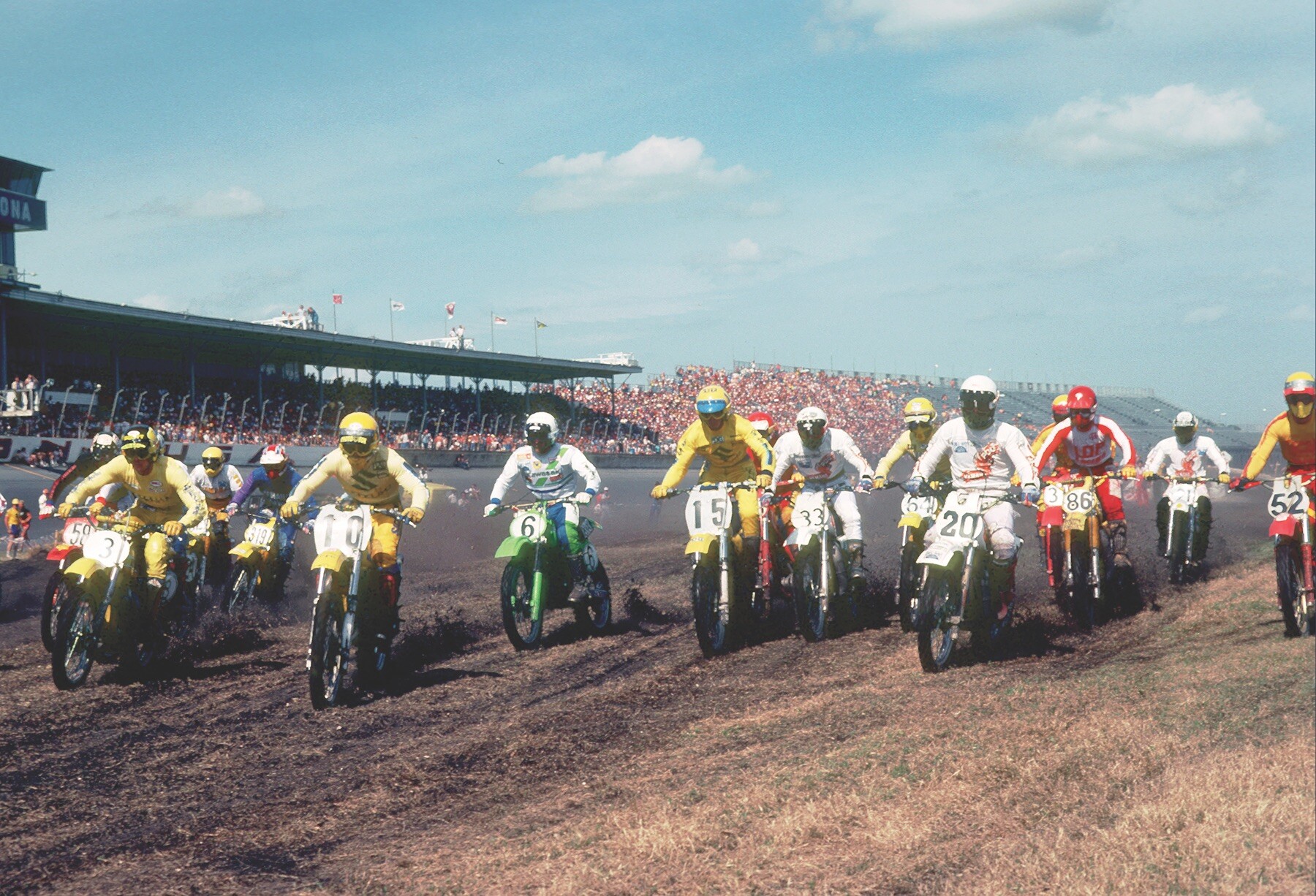Motocross is often seen as a high-octane sport dominated by younger athletes. The intense physical demands, quick reflexes, and stamina required make it seem like a young person’s game. But motocross, in fact, attracts racers of all ages, from youth competitors to seasoned veterans who defy the stereotypes of aging. One common question that arises is: how old is the oldest motocross racer?
Motocross is a form of off-road motorcycle racing that involves racing on dirt tracks with obstacles like jumps, sharp turns, and uneven terrain. It is a physically demanding sport, requiring not only strength and endurance but also agility, precision, and an ability to make split-second decisions. The term “motocross” itself is a combination of “motorcycle” and “cross-country,” reflecting the rough and challenging nature of the races.
The sport can trace its roots back to early 20th century Britain, where motorcycle trials began to gain popularity. From there, motocross evolved into a competitive sport, with races held on specially designed dirt tracks filled with hills, ramps, and tight corners. Today, it has grown into a global phenomenon, with major competitions such as the FIM Motocross World Championship and the AMA Motocross Championship attracting top talent from around the world.
Physical Demands of Motocross
Motocross places immense physical stress on the rider. Navigating through rough terrains, maintaining balance, and controlling the bike through sharp turns and jumps require a combination of strength, stamina, and agility. A motocross rider must maintain control over the bike, often while standing on the foot pegs, which takes a toll on both the upper and lower body. The cardiovascular system is also pushed to its limits due to the high adrenaline, rapid movements, and endurance needed to complete the race.
It’s no surprise that most professional motocross riders are young athletes. However, older riders—some well into their 60s and beyond—are still competing. This raises the question of how age affects performance and whether older riders can continue to race successfully.
Who Can Participate in Motocross?
Motocross is a sport for people of all ages. While young riders often dominate the sport, there are categories for different age groups, allowing both youth and seniors to participate. Riders typically start young, with many professional racers beginning their careers in their early teens or even younger. The sport’s governing bodies, such as the American Motorcyclist Association (AMA) and the Federation Internationale de Motocyclisme (FIM), have established different racing classes based on age, skill level, and engine size.
Age Categories in Motocross Racing
- Youth Classes – These categories often start as young as 4 to 6 years old, with small, low-powered motorcycles designed to be safe for children. There are specific classes for each age group, such as the 50cc and 65cc classes for very young riders.
- Amateur and Professional Adult Classes – The majority of competitive motocross riders are in their late teens through their 30s. This is the age range where riders have the optimal combination of physical ability and skill development.
- Veteran and Senior Classes – Motocross organizations often have categories specifically for older riders, sometimes starting from age 30 and up. These classes allow older riders to continue competing in an age-appropriate setting, with many events having divisions for riders in their 40s, 50s, and even 60s.
The Role of Experience
In addition to physical prowess, experience plays a critical role in motocross racing. Older riders often bring a wealth of experience that can compensate for a slight decline in physical ability. Knowing the tracks, understanding bike mechanics, and having a tactical approach to racing often gives older competitors an edge over younger, less experienced riders.
This blend of experience and passion is one reason why some riders continue to race well into their senior years. But how old is the oldest motocross racer currently competing?

How Old Is the Oldest Motocross Racer?
When it comes to motocross, it’s not uncommon to see athletes competing well into their 30s and 40s. However, some exceptional riders have pushed these boundaries much further, continuing to compete in their 60s, 70s, and even beyond. So, how old is the oldest motocross racer? While pinpointing an exact, definitive record can be difficult due to the local and international scope of the sport, several older racers have made headlines for their remarkable longevity in motocross.
Case Study: Doug “The Doctor” Dubach
One prominent figure in motocross who continues to defy age expectations is Doug Dubach, affectionately known as “The Doctor.” Born in 1963, Dubach started his motocross career in the 1980s and was known for his speed and technical skills. However, what sets him apart is that even well into his 50s, Dubach has continued to dominate in the World Vet Motocross Championship, an event specifically for older riders.
Dubach is not just an occasional participant. He has won more than 25 World Vet Championships, solidifying his reputation as one of the most successful older riders in motocross history. His story illustrates that age, while certainly a factor, is not necessarily a barrier to continued success in the sport.
Other Notable Senior Motocross Riders
- John DeSoto – Known as “The Flyin’ Hawaiian,” John DeSoto was a prominent motocross racer in the 1970s. Even after retiring from professional racing, he continued to ride well into his 60s, competing in veteran events and showing that the love for motocross doesn’t fade with age.
- Ronnie Renner – Renner, a freestyle motocross legend, has also competed in motocross racing for decades. While more associated with freestyle motocross (FMX), Renner has shown that riders can continue to perform at a high level even as they age. Renner, born in 1977, has remained active in the motocross community in his 40s, both riding and inspiring the next generation of riders.
- Barry Higgins – Higgins, a pioneer of American motocross, competed in the first-ever AMA Motocross Championship in 1972. Even after his professional career ended, he continued to race for fun and in veteran events well into his later years.
These racers, while exceptional in their longevity, are not alone. Across the world, there are many examples of older motocross enthusiasts who continue to participate in local races, often in age-specific categories, proving that age is not necessarily a limit.
What Is the Record for the Oldest Motocross Racer?
While there is no official “world’s oldest motocross racer” record listed in the Guinness World Records, several reports indicate that riders well into their 70s and 80s are still actively competing. For example, in 2020, a 77-year-old motocross rider from New Zealand made headlines for his participation in local motocross events. His story, like those of other senior riders, showcases that motocross is a sport where passion can keep you on the track long after the average person might hang up their helmet.
Motivations Behind Older Racers
The motivations for these veteran racers to keep competing vary. For many, motocross is more than just a sport—it’s a lifestyle. “I can’t imagine not riding,” said one senior racer in a recent interview. “It’s in my blood. I’ve been doing this for so long that it keeps me young.”
Additionally, there is a sense of community among veteran racers. Many older riders compete in events like the World Vet Motocross Championship, where they not only race but also reconnect with old friends and celebrate their shared passion for the sport. For these racers, it’s about more than just the thrill of the race—it’s about maintaining an active lifestyle, staying engaged with the motocross community, and continuing to challenge themselves physically and mentally.

How Age Impacts Motocross Racing Performance
As motocross racers age, there are certain inevitable physical changes that can impact performance. However, many older riders are able to offset these effects through experience, training, and mental resilience.
Physical Changes with Age
- Decline in Reaction Time: One of the most significant changes with age is the natural decline in reaction time. For motocross racers, who must make split-second decisions on the track, a slower reaction time can be a disadvantage. Sharp turns, jumps, and changes in terrain all require quick responses to stay competitive.
- Decreased Muscle Strength and Endurance: As people age, muscle mass and endurance typically decline. This can affect a rider’s ability to control the bike over long races or on particularly challenging tracks. Motocross is physically demanding, requiring upper body strength to maneuver the bike and lower body strength for balance and support while navigating rough terrains.
- Slower Recovery Times: Injuries are part of the game in motocross, but as riders age, recovery from injuries can take longer. Older riders often experience more aches, pains, and longer healing times than their younger counterparts.
- Joint Health and Flexibility: The constant jarring and impact on the body from jumps and uneven terrain can be particularly hard on joints. Older riders may experience issues with arthritis or joint stiffness, which can limit their flexibility and range of motion on the bike.
How Older Racers Overcome Physical Limitations
While these physical changes can pose challenges, many veteran motocross riders have found ways to adapt their training and riding techniques to continue competing successfully.
- Focus on Fitness and Training: Older motocross racers often place a heavier emphasis on fitness, particularly strength training and cardiovascular endurance. By maintaining a rigorous exercise routine, they can mitigate some of the age-related physical declines. Strengthening core muscles and improving flexibility through practices like yoga can also help older riders maintain control and balance on the bike.
- Experience as an Advantage: Older racers bring years—often decades—of experience to the track. Their knowledge of track conditions, race strategies, and bike handling can give them an edge over younger, less experienced riders. This experience allows them to make smarter decisions, conserve energy, and avoid costly mistakes during races.
- Mental Resilience: Motocross is as much a mental game as it is physical. Veteran racers often have a strong sense of mental resilience and focus, enabling them to stay calm under pressure. Mental strength is essential in handling the high stakes and intense competition of motocross.
Key Areas Where Older Racers Excel
- Technical Riding Skills: Older riders tend to be more technically proficient due to their years of experience. They know how to navigate difficult sections of the track with precision, which can often make up for any loss of speed.
- Race Strategy and Tactics: While younger riders may rely on raw speed and physical power, older riders often focus on tactics, using their experience to outsmart competitors. Knowing when to push hard and when to conserve energy is crucial, especially in longer races.
- Bike Maintenance and Setup Knowledge: Veteran racers often have deep knowledge of their bikes, including how to adjust settings for different track conditions. This understanding allows them to optimize their bike’s performance, even if their physical abilities have diminished slightly.
Example of Adaptation: Doug Dubach
Doug Dubach, whom we discussed earlier, is a prime example of how older riders adapt to remain competitive. Even into his 50s, Dubach has continued to dominate veteran motocross events. His focus on fitness, attention to his bike’s setup, and deep understanding of race strategy have allowed him to stay competitive long after many riders his age have retired.
In an interview, Dubach mentioned that his success at an older age is largely due to a commitment to maintaining his physical condition. He dedicates time to both strength training and endurance exercises, focusing on the specific muscle groups needed for motocross. This combination of physical and mental preparation enables him to keep racing at a high level.

The Typical Age Range for Professional Motocross Racers
Motocross is generally considered a young person’s sport due to the high levels of physical fitness and stamina required. Most professional motocross racers reach their peak in their 20s and 30s, when they are at their most agile and physically capable. However, the sport attracts riders across a broad range of ages, and the progression from youth to veteran categories allows motocross enthusiasts to continue competing long after their professional careers might have ended.
Average Age of Professional Motocross Racers
In professional motocross, the average age of top racers typically falls between 22 and 30 years old. This is the age range where riders often perform at their peak, combining physical strength, agility, and experience gained over years of competitive racing. Riders in this range often have the best combination of speed, skill, and the ability to recover quickly from the demands of the sport.
For instance, top professional racers like Ken Roczen and Eli Tomac reached their prime during their mid-to-late 20s. At this stage, they had both the physical capability to handle the rigors of the sport and the experience to make smart, tactical decisions during races. Roczen, born in 1994, was already dominating motocross competitions in his early 20s, and his success continued well into his late 20s.
Notable Young and Middle-Aged Champions
There have been many examples of motocross champions achieving greatness at relatively young ages. For instance, Ricky Carmichael, often referred to as the “GOAT” (Greatest of All Time) in motocross, started winning championships in his teens and continued to dominate the sport into his early 30s. Ryan Dungey, another motocross legend, secured multiple titles in his 20s before retiring at age 27, although he briefly returned to the sport in his 30s.
However, it is not uncommon for some riders to remain competitive well into their 30s, or even beyond, especially in certain leagues and categories. Riders like Chad Reed, who remained competitive in AMA Supercross well into his late 30s, demonstrate that motocross athletes can sustain long, successful careers by maintaining their physical fitness and adapting their strategies as they age.
Transition to Veteran and Senior Classes
While most professional motocross racers retire from the top-tier competitions in their late 20s or early 30s, many continue to race in veteran or senior classes. These categories are designed for older riders who still want to compete but may no longer be able to perform at the same level as younger athletes.
- Veteran Classes (30+ years): Many motocross events feature categories for riders over the age of 30. This allows older competitors to race against others in their age group, creating a more level playing field. Riders in these classes often have a wealth of experience, which can make the races highly competitive despite the physical challenges that come with age.
- Senior Classes (40+ and 50+ years): Senior classes cater to riders in their 40s, 50s, and even 60s. Events like the World Vet Motocross Championship provide opportunities for older riders to continue competing in a safe and age-appropriate environment. These events are often highly respected in the motocross community, as they showcase the passion and commitment of older athletes who have remained dedicated to the sport.
The Balance Between Youth and Experience
In motocross, younger riders often have the advantage of speed and physical endurance, while older riders can rely on their experience and race strategy. This balance is one of the reasons why some riders are able to remain competitive well into their later years. Experience allows older racers to make smarter decisions on the track, manage their energy levels, and navigate difficult terrain with precision, often compensating for any physical decline.
As a result, the motocross community continues to welcome riders of all ages, whether they are just beginning their careers or looking to extend their time on the track through veteran competitions.